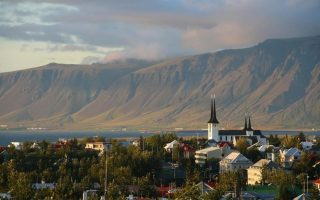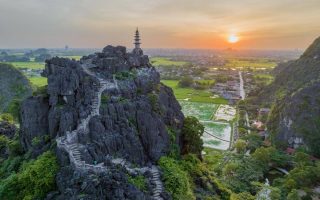lotusyouthcouncil.com – Puncak Jaya, also known as Carstensz Pyramid or Puncak Mandala, stands as the highest peak in Oceania, reaching an impressive height of 4,884 meters (16,024 feet) above sea level. Located in the Sudirman Range of the Central Highlands of Papua, Indonesia, this mountain is not only a geographical marvel but also a symbol of the rich biodiversity and cultural heritage of the region. Puncak Jaya is part of the Maoke Mountains, which are characterized by their rugged terrain and dense tropical forests.
Geographical Significance of Puncak Jaya
Puncak Jaya is situated on the island of New Guinea, which is the second-largest island in the world. The mountain’s geographical location, deep in the heart of the Lorentz National Park, makes it one of the most remote and challenging peaks to climb in Oceania. The Lorentz National Park, a UNESCO World Heritage site, is known for its incredible biodiversity, including unique flora and fauna found nowhere else on Earth.
The Unique Geography of Puncak Jaya
What sets Puncak Jaya apart is its glacial ice cap, which is the only one of its kind in the tropics. This ice cap, along with several small glaciers, is a remnant of the Pleistocene ice age. The presence of these glaciers makes Puncak Jaya a unique climatic and ecological zone, offering a glimpse into the past climatic conditions of the region. The mountain’s summit is characterized by its steep, rocky faces and challenging climbs, making it a formidable peak for mountaineers.
Historical Overview of Puncak Jaya’s Exploration
The first recorded ascent of Puncak Jaya was achieved in 1962 by a team led by Heinrich Harrer, an Austrian mountaineer and explorer. Harrer’s expedition was a significant achievement, as it marked the first time the highest peak in Oceania had been summited. The success of the 1962 expedition paved the way for further exploration of Puncak Jaya and the surrounding Maoke Mountains.
Subsequent Expeditions and Notable Ascents
Since Harrer’s pioneering climb, Puncak Jaya has attracted numerous expeditions, each seeking to conquer its formidable heights. Over the years, climbers have explored various routes to the summit, with the most popular being the Normal Route and the North Ridge route. Despite the advancements in climbing technology and techniques, Puncak Jaya remains a challenging mountain, with only a select few managing to reach its summit.
Climbing Puncak Jaya: A Journey Through Diverse Ecosystems
Climbing Puncak Jaya is an adventure that takes climbers through a variety of ecosystems, from tropical rainforests at the base to the icy slopes near the summit. The ascent typically begins at the Kali Valley, located at an elevation of around 2,000 meters. From there, climbers must navigate through several high camps, enduring sub-zero temperatures and the challenging terrain.
The Role of Local Guides and Porters
Given the remote and challenging nature of climbing Puncak Jaya, many expeditions rely on experienced local guides and porters. These individuals provide essential expertise in navigating the mountain’s terrain, ensuring the safety and success of the climbing team. They also play a crucial role in promoting sustainable tourism and protecting the mountain’s fragile ecosystems.
Environmental Concerns and Conservation Efforts
The increasing popularity of mountaineering in Papua has raised concerns about environmental degradation. Puncak Jaya, like other high-altitude regions, is vulnerable to the impacts of climate change and human activities. Conservation efforts are underway to protect the fragile ecosystems of the Maoke Mountains, including initiatives to reduce waste and promote sustainable tourism.
The Future of Puncak Jaya and Its Preservation
As the world continues to grapple with the impacts of climate change, the preservation of mountains like Puncak Jaya becomes ever more critical. Efforts to limit human impact and promote responsible tourism will be essential in ensuring that future generations can experience the awe-inspiring beauty of Puncak Jaya.
Conclusion
Puncak Jaya, with its majestic beauty and formidable challenges, stands as a testament to the enduring allure of the Maoke Mountains. For climbers and nature lovers alike, it represents the ultimate test of human spirit and resilience. As we continue to explore and appreciate the wonders of Puncak Jaya, it is our responsibility to protect this natural marvel for generations to come.




